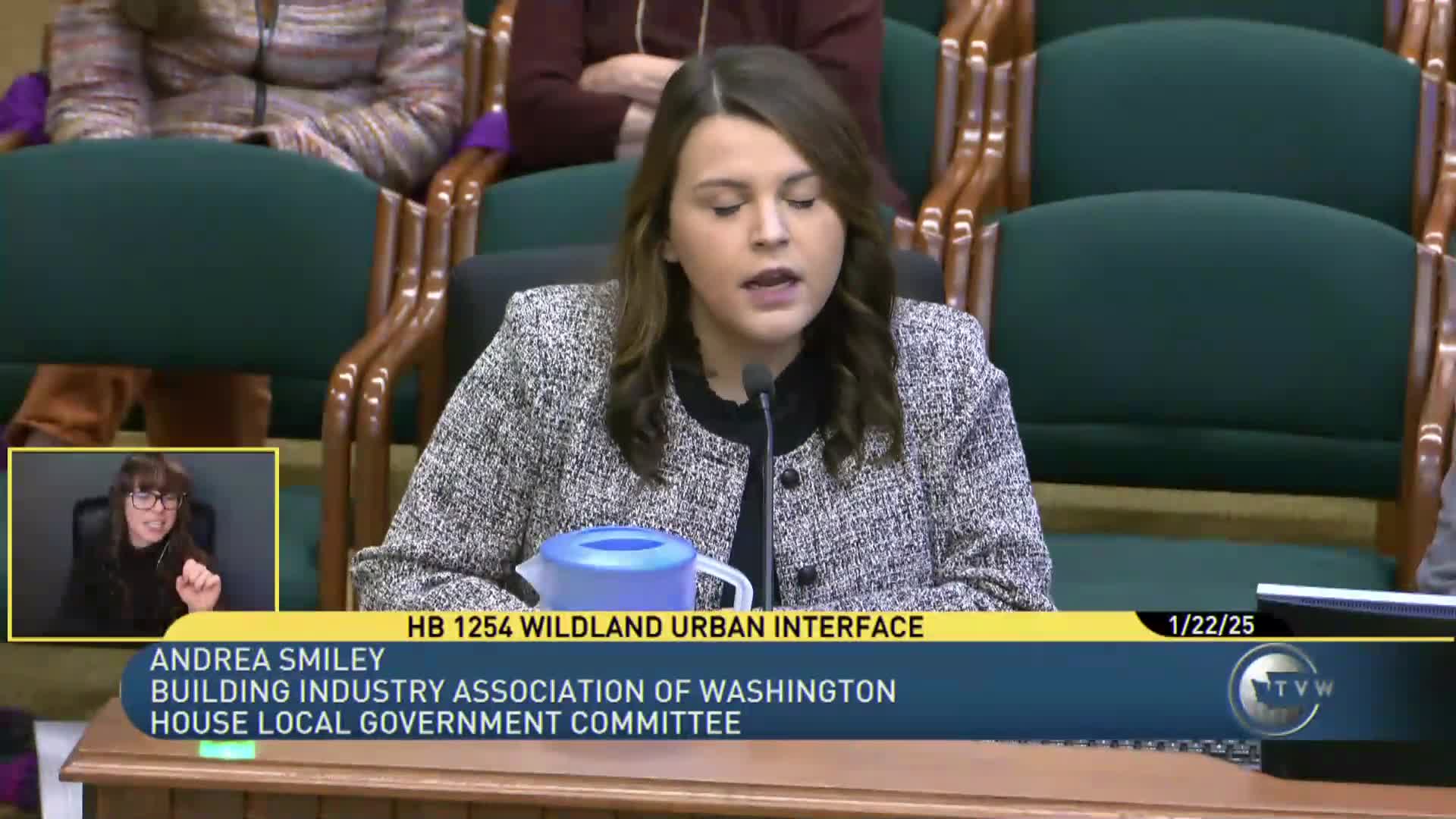Washington builders warn new wildfire codes could worsen housing crisis and affordability issues
January 22, 2025 | Local Government, House of Representatives, Legislative Sessions, Washington
This article was created by AI summarizing key points discussed. AI makes mistakes, so for full details and context, please refer to the video of the full meeting. Please report any errors so we can fix them. Report an error »

In a recent meeting of the House Local Government Committee, significant concerns were raised regarding the impact of new wildfire safety regulations on housing affordability in Washington State. The discussions highlighted the urgent need for more housing amid a growing crisis, with the state estimated to require over 1.1 million new homes in the next two decades to meet demand.
A representative from the Association of Washington Business expressed worries about the proposed Wildland-Urban Interface (WUI) code, which could add an estimated $24,000 to $25,000 in construction costs per home. This increase could severely hinder efforts to provide affordable housing, especially as the state grapples with a housing shortage. The representative pointed out that the costs associated with compliance—such as fire-resistant materials and independent power sources for water tanks—could make building new homes prohibitively expensive.
The committee also discussed the lack of updated mapping for high-risk areas, which complicates planning and development. Current maps do not adequately reflect the complexities of local geography, including wetlands and critical areas, potentially leading to further restrictions on where homes can be built. This situation raises concerns that the new regulations, while aimed at improving safety, could inadvertently limit housing options and exacerbate the existing crisis.
The urgency of the housing issue was underscored by the new governor's commitment to building 200,000 housing units in his first term. However, stakeholders emphasized that any loss of buildable land due to new regulations could counteract these efforts. The committee members expressed a desire for a more inclusive process in developing these codes, ensuring that the voices of builders and developers are heard to create a balanced approach that prioritizes both safety and housing availability.
As Washington State prepares for new wildfire safety codes set to take effect in 2027, the discussions from this meeting highlight the critical intersection of safety regulations and housing affordability. The outcomes of these deliberations will be pivotal in shaping the future of housing in the state, as officials seek to address both the immediate needs of residents and the long-term implications of regulatory changes.
A representative from the Association of Washington Business expressed worries about the proposed Wildland-Urban Interface (WUI) code, which could add an estimated $24,000 to $25,000 in construction costs per home. This increase could severely hinder efforts to provide affordable housing, especially as the state grapples with a housing shortage. The representative pointed out that the costs associated with compliance—such as fire-resistant materials and independent power sources for water tanks—could make building new homes prohibitively expensive.
The committee also discussed the lack of updated mapping for high-risk areas, which complicates planning and development. Current maps do not adequately reflect the complexities of local geography, including wetlands and critical areas, potentially leading to further restrictions on where homes can be built. This situation raises concerns that the new regulations, while aimed at improving safety, could inadvertently limit housing options and exacerbate the existing crisis.
The urgency of the housing issue was underscored by the new governor's commitment to building 200,000 housing units in his first term. However, stakeholders emphasized that any loss of buildable land due to new regulations could counteract these efforts. The committee members expressed a desire for a more inclusive process in developing these codes, ensuring that the voices of builders and developers are heard to create a balanced approach that prioritizes both safety and housing availability.
As Washington State prepares for new wildfire safety codes set to take effect in 2027, the discussions from this meeting highlight the critical intersection of safety regulations and housing affordability. The outcomes of these deliberations will be pivotal in shaping the future of housing in the state, as officials seek to address both the immediate needs of residents and the long-term implications of regulatory changes.
View full meeting
This article is based on a recent meeting—watch the full video and explore the complete transcript for deeper insights into the discussion.
View full meeting
